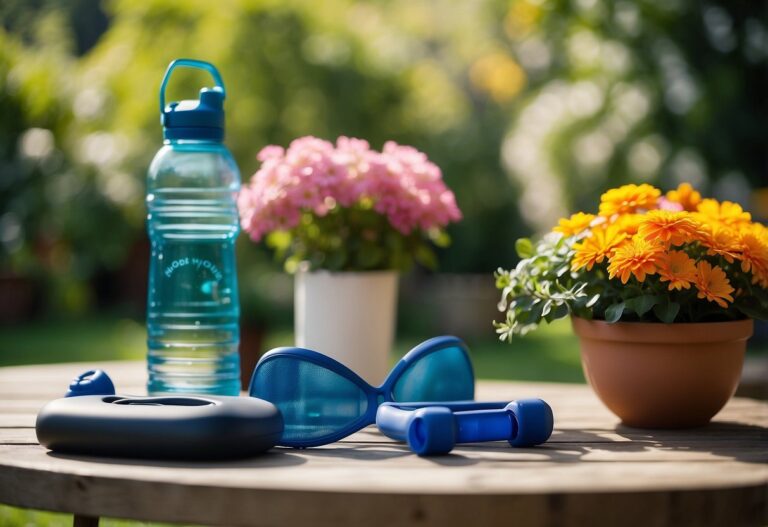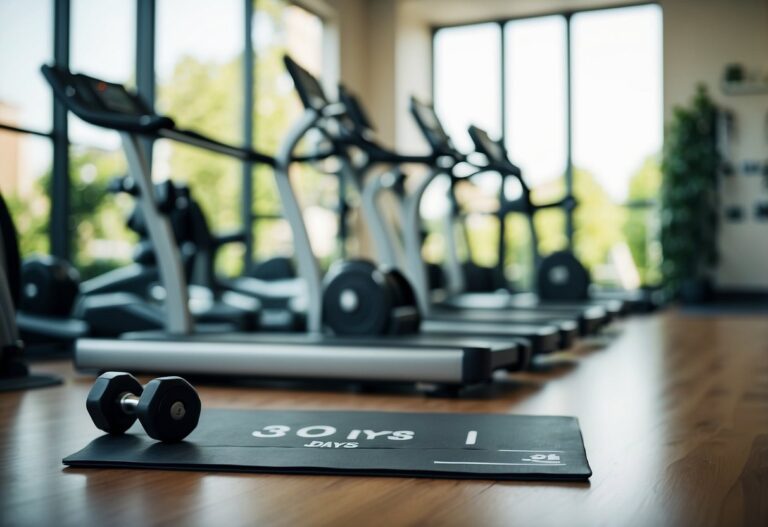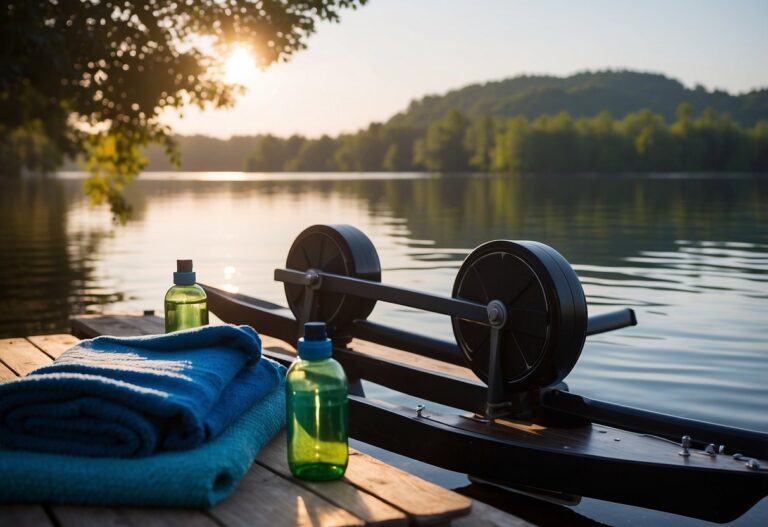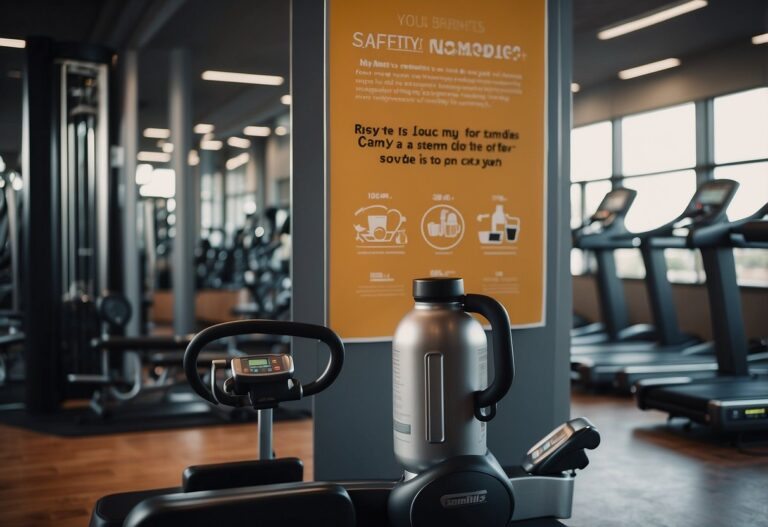Exercising outdoors offers a refreshing change from the usual gym routine. The fresh air and natural surroundings can make workouts feel more enjoyable and less monotonous. You’ll find that mixing up your routine with outdoor activities not only benefits your physical health but also boosts your mental well-being.

When you take your workouts outside, you can use various landscapes and environments to your advantage. From parks to beaches, the possibilities are endless. Whether you’re a seasoned athlete or just starting, outdoor workouts provide a flexible and engaging way to stay fit and healthy.
Warm-up with Dynamic Stretches
Starting your workout with dynamic stretches can boost your performance and reduce the risk of injury. These stretches involve moving parts of your body and increasing your reach, speed, or both.
Try doing Vinyasa Flow to activate your muscles. This yoga-based move is excellent for opening up your body and loosening your joints.
Leg swings are also a great option. Swing one leg forward and backward with a controlled motion. This helps to loosen up your hips and legs.
For something simpler, walking lunges are a good choice. They build strength while preparing your legs for more intense exercises.
Use these stretches to get your body ready and you’ll notice the difference.
Try Hill Sprints for Intensity

Hill sprints are a great way to boost your workout intensity. These short, powerful runs up a hill can help improve your strength, speed, and endurance.
Start with a good warm-up. Jog for 10-15 minutes to get your muscles ready. Then, do some dynamic stretches to prep your body for the hard work ahead.
When you’re ready, sprint uphill at a high effort level, around 9 out of 10. Keep it short—5 to 10 seconds per sprint is enough. Walk back down to recover, then repeat.
Hill sprints also enhance your running form. They make your stride longer and more powerful, which translates to better performance on flat ground.
Utilise park benches for tricep dips
Using a park bench for tricep dips is a simple way to add strength training to your outdoor workout. All you need is a sturdy bench and your body weight.
Start by sitting on the edge of the bench with your hands gripping the bench beside your hips. Slide your hips off and lower your body by bending your elbows to a 90-degree angle.
Push yourself back up to the starting position and repeat. This exercise targets the triceps and can be made harder by extending your legs further out.
For tricep dips, try doing 2 sets of 20 repetitions to see results. Adjust hand placement to switch between triceps and chest targets.
Incorporate Bodyweight Circuits

Incorporating bodyweight circuits into your outdoor workout routine can be a game-changer. You don’t need any equipment, which makes it perfect for training anywhere.
You can start with simple exercises like squats, lunges, and press-ups. These moves target multiple muscle groups simultaneously, giving you a full-body workout.
Try creating a circuit where you do each exercise for a set time, like 30 seconds, with a brief rest in between. This keeps your heart rate up and adds a cardio element.
To make it more interesting, you can mix exercises. For instance, after your squats, jump straight into push-ups or burpees. This variety not only keeps things exciting but also challenges your body in different ways.
For an added challenge, do circuits that involve stair sprints or high knee steps. These are excellent for building leg strength and endurance.
You can combine different exercises to suit your fitness level and goals. This flexibility is one of the biggest advantages of bodyweight circuits.
Remember to keep your form correct to avoid injury and get the most out of your workout. And don’t forget to have fun with it!
Mix up your running routes

Running the same path every day can get boring. When you vary your running routes, you keep things interesting and exciting. Try different parks, neighbourhoods, or trails. This mix can keep you motivated and reduce the risk of mental burnout.
Switching up your routes can also improve your fitness. You may encounter new terrains like hills, which can make your workout more challenging. This can help you build strength and endurance.
Next time you lace up your trainers, think about exploring a new path. It’s a refreshing way to stay engaged with your running routine.
Pack Resistance Bands for Variety

When planning your outdoor workouts, pack resistance bands to add variety to your routine. They are lightweight, easy to carry, and very versatile.
Use them for exercises like squats or shoulder presses. Simply step on the band and adjust the tension by moving your feet closer or farther apart. This way, you can customise your workout to match your fitness levels.
Find a stationary object like a tree to anchor your band. This opens up more exercise options, like rows or chest presses, allowing you to target different muscle groups effectively.
Incorporating resistance bands can make your workouts more engaging and challenging, helping you avoid workout boredom while staying in shape.
Integrate Yoga in the Park

Yoga in the park allows you to connect with nature and enjoy fresh air. The natural surroundings can make your practice more relaxing and invigorating.
When you’re outdoors, embrace your environment. Let the sounds, smells, and sights of the park enhance your yoga experience. This helps you stay present and grounded.
Think about bringing lightweight, compact travel yoga mats for easy transport. They’re perfect for outdoor sessions and give you a clean surface to practise on.
Try using items from nature or your surroundings as props. For example, a water bottle can replace a block, and a rolled-up towel can work as a bolster.
Hydrate with a Large Water Bottle

Staying hydrated during your outdoor workouts is crucial. One of the best ways to ensure you’re getting enough water is by carrying a large water bottle with you.
When you have a large bottle, it’s easier to track how much water you’ve consumed. You won’t run out quickly and won’t need to refill as often. This can be a game-changer for long workout sessions.
Think about those times when you’ve forgotten to drink water simply because you didn’t have it at hand. Having a big water bottle right there can serve as a constant reminder to take regular sips.
Use Playground Equipment for Pull-Ups
Playgrounds aren’t just for kids; they can be your fitness haven too. Use the bars and structures to do pull-ups.
Start by finding a sturdy bar, often part of the monkey bars or climbing frames. These work perfectly for your pull-ups. Ensure the bar can support your weight.
Using a pull-up bar at the playground, you can target your back, shoulders, and arm muscles effectively. If you’re new to pull-ups, try using a resistance band for assistance. Loop the band around the bar and step one foot into the loop. This helps you manage your weight as you pull up.
Playground bars are not only convenient but also offer a variety of grips. Experiment with different grips such as overhand, underhand, or mixed grips to work different muscle groups and keep your workouts interesting.
Schedule workouts for cooler times of day

When it’s hot, timing your workouts can make a big difference. Try to exercise early in the morning or late in the evening. During these times, temperatures are usually cooler, making it more comfortable and safer for you.
Midday workouts can be more intense due to the heat. If you can, avoid working out between 1 pm and 5 pm. Temperatures can peak during these hours, increasing your risk of heat exhaustion.
Even if you prefer morning workouts, keep an eye on the weather forecast. Some days might still be too warm for comfort. Adjust your plans as needed to stay safe and cool.
Benefits of Outside Workouts
When you exercise outdoors, you gain more than just a workout. You get fresh air, sunlight and even chances to connect with others.
Physical Health Benefits
Outdoor exercise can improve your physical health in many ways. The sun’s ultraviolet-B (UVB) rays help your body produce vitamin D, which is vital for bone health and immune function. Many people are deficient in vitamin D, so spending more time outside can help you get what you need.
Another benefit is the variety of terrains and surfaces. Running or walking on different terrains, such as grass or sand, can challenge your muscles differently than flat surfaces. This can improve your balance and strength.
Outdoor workouts also have added resistance from the wind and other natural elements. This can make exercises like cycling or running more effective. Plus, you often breathe fresher air than you would indoors, which is good for your lungs.
Mental Health Benefits
Exercising outdoors can greatly benefit your mental health. Natural environments can reduce stress and improve your mood. Just five minutes in a green space can lower stress levels and increase happiness.
When you work out in nature, your mind becomes more engaged with your surroundings. Whether running on a trail or cycling through a park, you stay alert and focused, which can help reduce mental fatigue. It can feel like a mini-adventure, breaking the monotony of indoor routines.
Outdoor activity can also help fight anxiety and depression. The changing scenery and natural beauty can offer a mental escape from daily stresses. Fresh air and natural light boost your serotonin levels, which can improve your overall feeling of well-being.
Social Interaction
Outdoor workouts also offer unique social benefits. Group activities like hiking, cycling clubs, or joining a local sports team can be a great way to meet new people. Exercising with others can make workouts more fun and motivating.
You can also enjoy family activities like playing football in the park or taking a walk together. These activities strengthen relationships and create shared experiences.
Outdoor fitness classes are another option. These classes can help you form a community with people who share your interests. Having a workout buddy can help keep you accountable and make sticking to your fitness goals easier.
Optimal Gear for Outdoor Exercise

When working out outside, having the right gear can make a big difference. From weather-appropriate clothing to essential accessories, the right equipment keeps you comfortable and enhances your performance.
Weather-Appropriate Clothing
Dressing for the weather is crucial. In summer, lightweight and breathable fabrics like cotton or moisture-wicking materials help keep you cool and dry. Brands like Nike and Under Armour offer great options. Don’t forget a hat or visor and UV-protective sunglasses to shield from the sun.
In cooler weather, layering is key. Start with a moisture-wicking base layer to keep sweat off your skin. Then, add an insulating layer such as a fleece jacket. Windproof and water-resistant outer layers are must-haves to protect against the elements.
Invest in quality running shoes, like those from Asics or Brooks, which offer good support and traction regardless of weather. Comfort and fit are essential, so take the time to try on different styles.
Essential Accessories
Accessories can make your workouts more efficient and enjoyable. A hydration pack or water bottle is vital for staying hydrated, especially during longer sessions. Energy gels or snacks can also be handy for maintaining energy levels.
Fitness trackers or smartwatches, like the Garmin Forerunner, can help you monitor your heart rate and distance covered. This makes it easier to track your progress and stay motivated.
Reflective gear or headlamps are important for safety if you’re exercising in low-light conditions.
For strength training on the go, consider compact gear such as resistance bands or a portable pull-up bar. A yoga mat can add comfort for stretches and bodyweight exercises, especially on rough surfaces. For more ideas, check out this article on the best outdoor exercise equipment for a backyard gym.
Safety Tips for Outdoor Workouts
When working out outside, it’s important to stay safe by keeping hydrated and being aware of your surroundings. This helps you avoid common risks and stay healthy.
Hydration and Nutrition
Keeping hydrated is crucial when you’re exercising outside. Drink plenty of water before, during, and after your workout. Dehydration can lead to dizziness and fatigue. It’s a good idea to carry a water bottle with you at all times. If it’s hot out, drink even more water to make up for what you lose through sweat.
Eating the right foods before your workout can also make a big difference. Foods rich in carbohydrates and protein can give you the energy you need. Think of snacks like bananas, nuts, or yoghurt. After your workout, eat something with protein to help your muscles recover.
Another tip is to avoid heavy meals right before you exercise. This can make you feel sluggish and can even cause stomach issues. Instead, opt for lighter snacks that are easy to digest.
Environmental Awareness
Checking the weather forecast is one of the first things you should do. If it’s too hot, humid, or stormy, it might be better to work out indoors. Weather extremes can put you at risk of heatstroke or hypothermia.
Choosing the right clothing can also keep you safe. Wear layers that you can easily add or remove, depending on the weather. A moisture-wicking base layer can keep sweat away from your skin, while an outer layer can protect you from wind and rain.
Being mindful of your surroundings is key. If you’re running or biking, wear reflective gear so others can see you. This is especially important early in the morning or late in the evening when visibility is low.
Stick to well-lit and populated areas, and always let someone know where you’re going. In case of an emergency, it’s good to have someone who knows your location.







